On Exhibit: Marking the Russian Revolution's Centennial
Image Carousel with 7 slides
A carousel is a rotating set of images. Use the previous and next buttons to change the displayed slide
-
Slide 1: Our Lenin was illustrated by William Siegel. The book is based upon an illustrated story of Lenin’s life published in the Soviet Union in the 1920s under the title of Lenin for Children. Ruth Shaw and William Siegel made a free translation of the book and adapted it for American children. The story was partly fictionalized but adhered mainly to the events in the life of Lenin. New York: International Publishers, 1934. Image Courtesy of Bakhmeteff Archive of Russian and East European History and Culture
-
Slide 2: Propaganda on Bolshevism. Image Courtesy of Rare Book and Manuscript Library
-
Slide 3: Look magazine on February 4, 1947 featured an exclusive personal Interview with Stalin. The journalist and aviator Elliott Roosevelt asked Stalin 12 questions in the Kremlin on December 21, 1946. These, together with Stalin’s answers, were published in the American magazine Look and then broadcast by Moscow Radio. Image Courtesy of Bakhmeteff Archive of Russian and East European History and Culture
-
Slide 4: Leon Trotsky (1879 – 1940) in Mexico, late 1930s. Image Courtesy of Bakhmeteff Archive of Russian and East European History and Culture
-
Slide 5: Khrushchev with his kids in Moscow, 1959. Image Courtesy of The Harriman Institute
-
Slide 6: In this cartoon, Khrushchev – borne aloft by Antoine Gizenga of Congo and Fidel Castro of Cuba – fires a hail of bullets at a United Nations desk, where Uncle Sam sits surprised. A shoe dangles from Khrushchev’s Thompson machine gun, recalling the Soviet leader’s “shoe-banging incident” at the UN on October 12, 1960. Image Courtesy of Bakhmeteff Archive of Russian and East European History and Culture
-
Slide 7: Alexander Zemlianichenko won his second Pulitzer Prize for this photograph in 1997. With the latest polls giving him a large lead over Communist challenger Gennadii Ziuganov, Russian President Boris Yeltsin dances at a rock concert in Rostov. Image Courtesy of Pulitzer Prize Archive, Rare Book and Manuscript Library
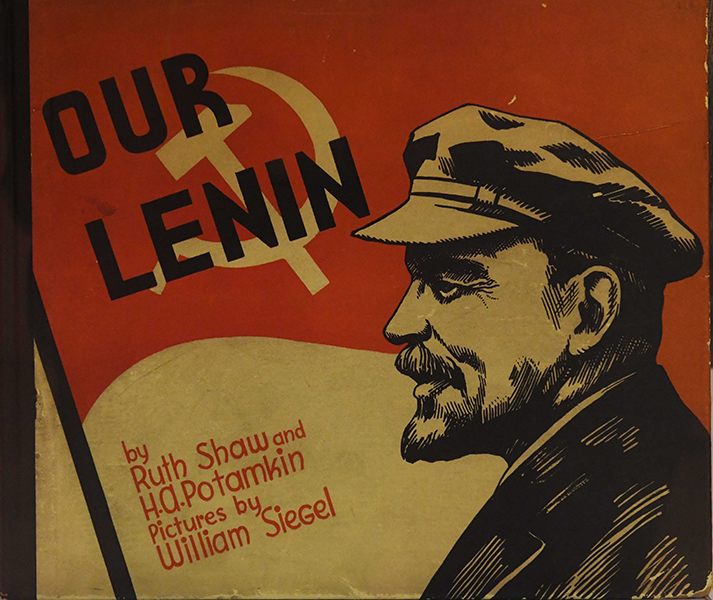
Our Lenin was illustrated by William Siegel. The book is based upon an illustrated story of Lenin’s life published in the Soviet Union in the 1920s under the title of Lenin for Children. Ruth Shaw and William Siegel made a free translation of the book and adapted it for American children. The story was partly fictionalized but adhered mainly to the events in the life of Lenin. New York: International Publishers, 1934. Image Courtesy of Bakhmeteff Archive of Russian and East European History and Culture
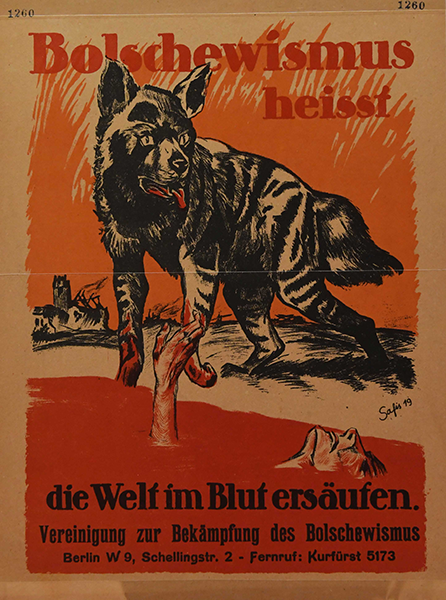
Propaganda on Bolshevism. Image Courtesy of Rare Book and Manuscript Library
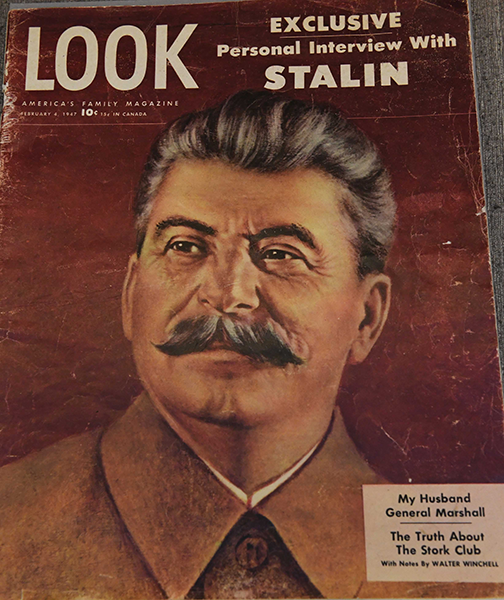
Look magazine on February 4, 1947 featured an exclusive personal Interview with Stalin. The journalist and aviator Elliott Roosevelt asked Stalin 12 questions in the Kremlin on December 21, 1946. These, together with Stalin’s answers, were published in the American magazine Look and then broadcast by Moscow Radio. Image Courtesy of Bakhmeteff Archive of Russian and East European History and Culture
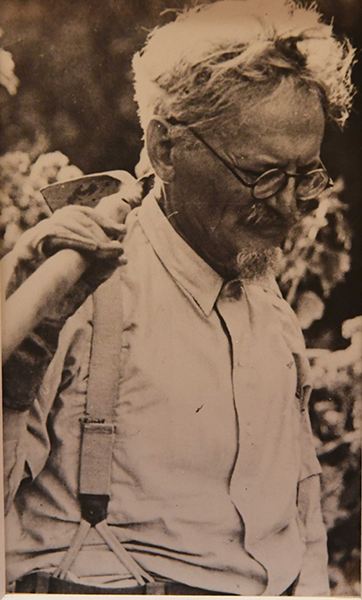
Leon Trotsky (1879 – 1940) in Mexico, late 1930s. Image Courtesy of Bakhmeteff Archive of Russian and East European History and Culture
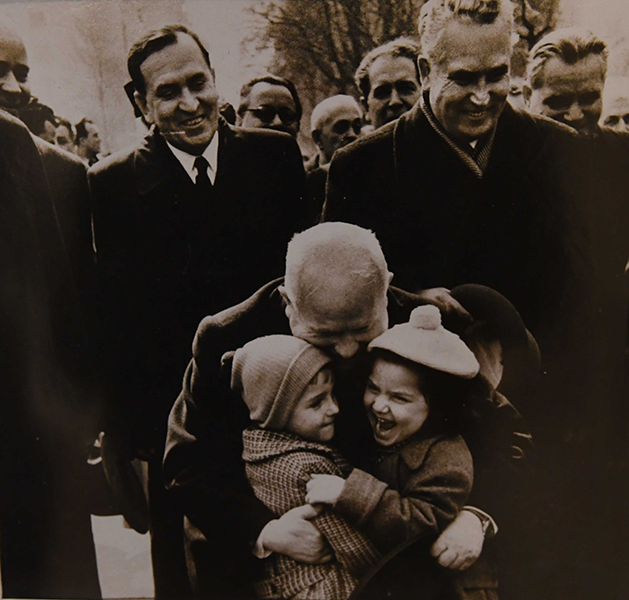
Khrushchev with his kids in Moscow, 1959. Image Courtesy of The Harriman Institute
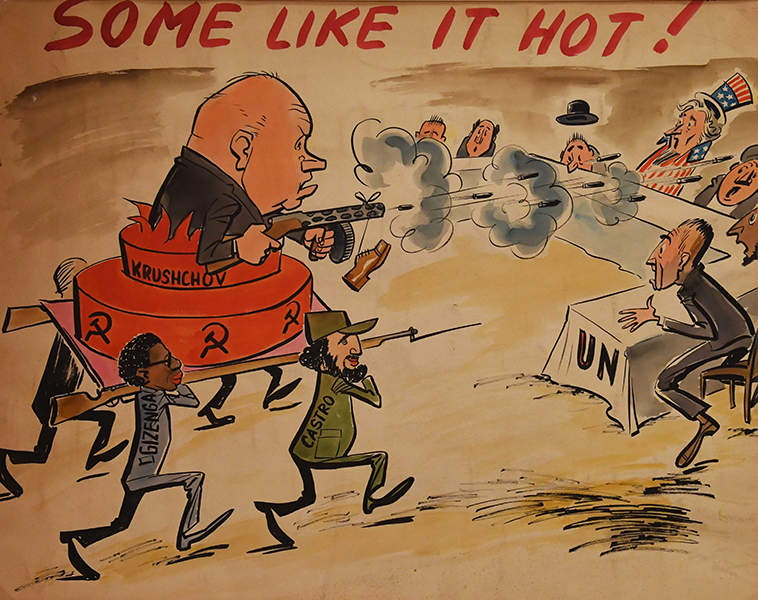
In this cartoon, Khrushchev – borne aloft by Antoine Gizenga of Congo and Fidel Castro of Cuba – fires a hail of bullets at a United Nations desk, where Uncle Sam sits surprised. A shoe dangles from Khrushchev’s Thompson machine gun, recalling the Soviet leader’s “shoe-banging incident” at the UN on October 12, 1960. Image Courtesy of Bakhmeteff Archive of Russian and East European History and Culture
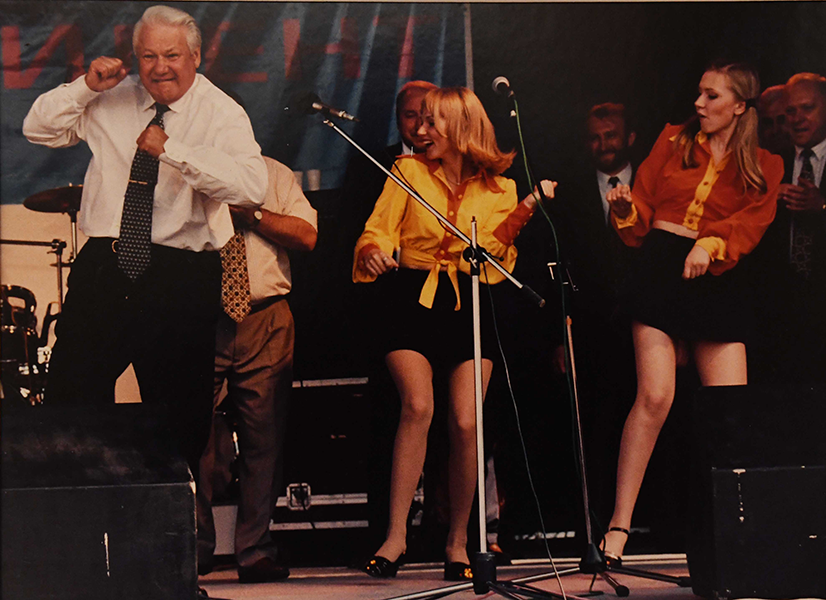
Alexander Zemlianichenko won his second Pulitzer Prize for this photograph in 1997. With the latest polls giving him a large lead over Communist challenger Gennadii Ziuganov, Russian President Boris Yeltsin dances at a rock concert in Rostov. Image Courtesy of Pulitzer Prize Archive, Rare Book and Manuscript Library
The Russian Revolution was not a single event in October 1917 when Tsar Nicholas II was overthrown by Lenin and the Bolsheviks. It was the culmination of a series of events starting in 1848 with the publication of The Communist Manifesto by Karl Marx and Friedrich Engels and climaxing in two separate 1917 revolutions. The first, in February, deposed the imperial government, and the second, in October, was when the Bolsheviks seized power.
Columbia’s Rare Book and Manuscript Library is marking the centennial of the revolutions with Actors and Perpetrators, an exhibition intended to both convey the dramatic events of 1917 and to show their continued relevance.
Drawing from the library’s collections, the exhibition presents documents, books, photographs, manuscripts and ephemera to trace the sweep of modern Russian history, including some objects that have never been displayed, such as a first edition of The Communist Manifesto and a holograph note written by Grigori Rasputin in which his angular, unsteady handwriting is said to reflect his disordered speech and personality.
The exhibition includes a poignant 1917 photograph of the 12-year-old hemophiliac Tsarevich Aleksei Nikolaevich being pulled in a sled through the snow in Tobol’sk, Siberia, where the Russian imperial family was detained until shortly before they were killed the following year, and a 1938 letter by Leon Trotsky about his biography of Stalin. Trotsky wrote the letter when he was living in exile in the Coyoacán area of Mexico City, in the home of painters Diego Rivera and Frida Kahlo, Rivera’s wife. Of more recent vintage are a Pulitzer Prize-winning 1996 photograph by Associated Press photographer Alexander Zemlianichenko of Boris Yeltsin dancing at a rock concert in Rostov and photographs of Vladimir Putin attending the Columbia World Leaders Forum in 2003.
“The exhibition tells the story of Russia’s 20th-century revolutions as they unfolded from manifold perspectives,” said Sean Quimby, director of the Rare Book and Manuscript Library. “A letter written on the eve of execution, a grainy photograph of Trotsky in exile, a telegram seeking aid from the Red Cross—the objects on display remind us that both the actors and perpetrators were living, breathing people.”
Actors and Perpetrators is on view in the Kempner Gallery of the Rare Book and Manuscript Library, on the sixth floor of Butler Library, through December 22.